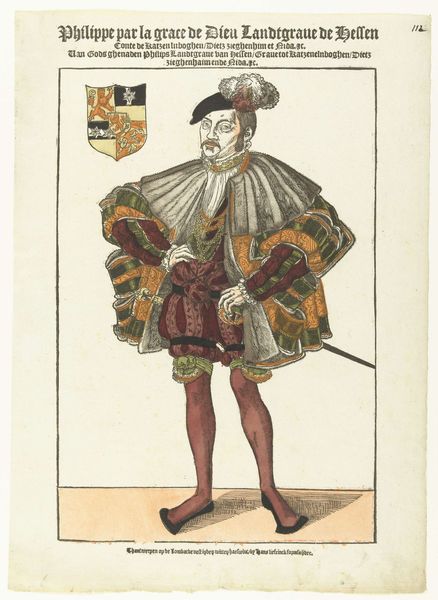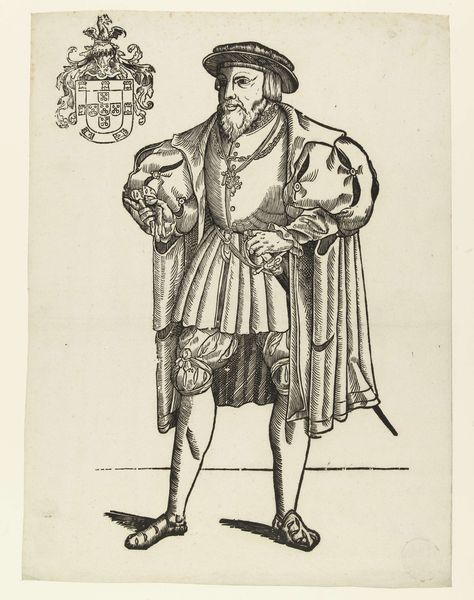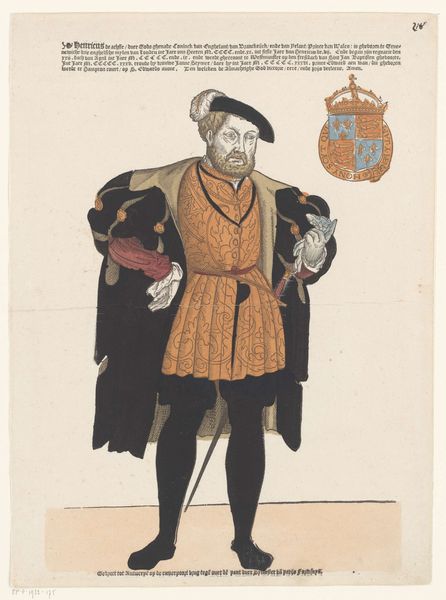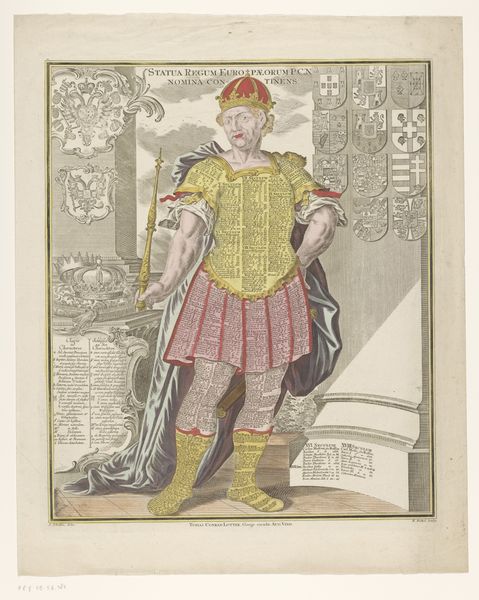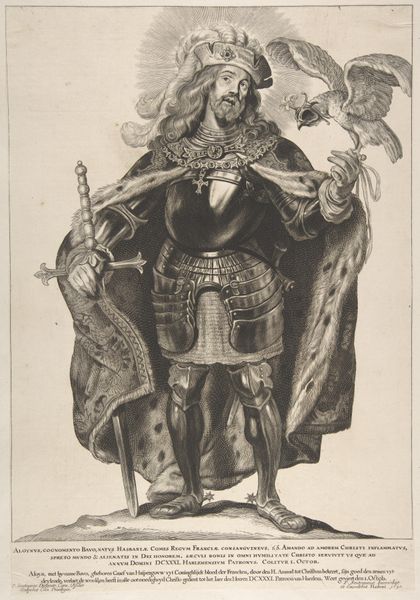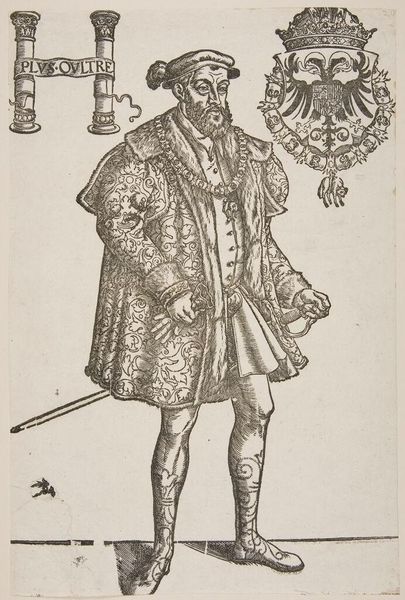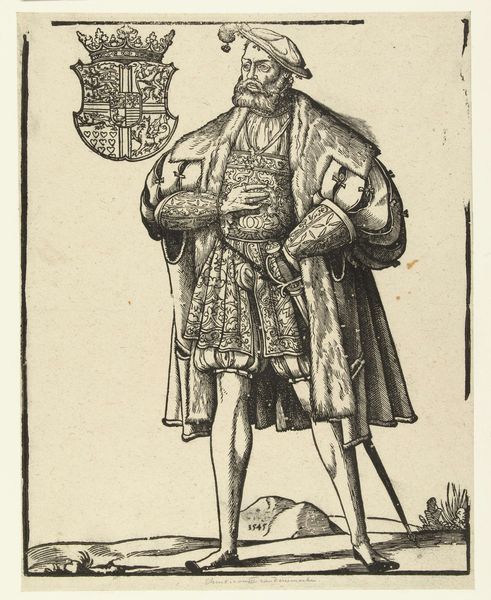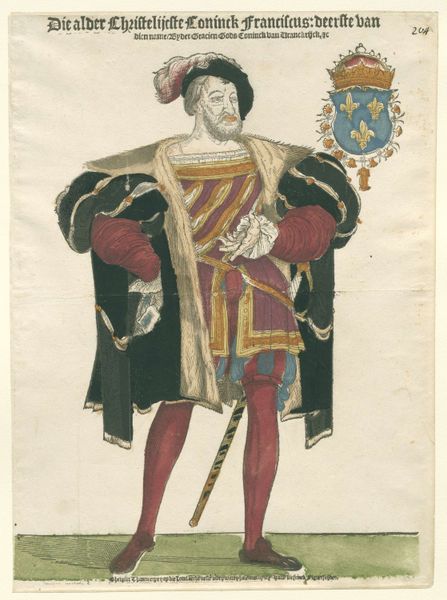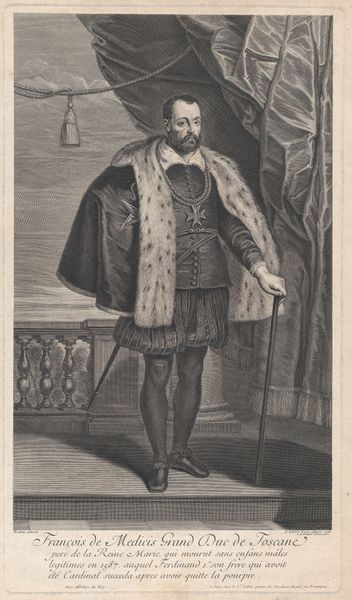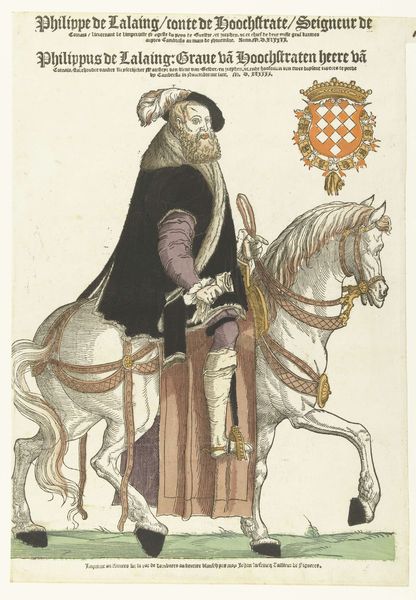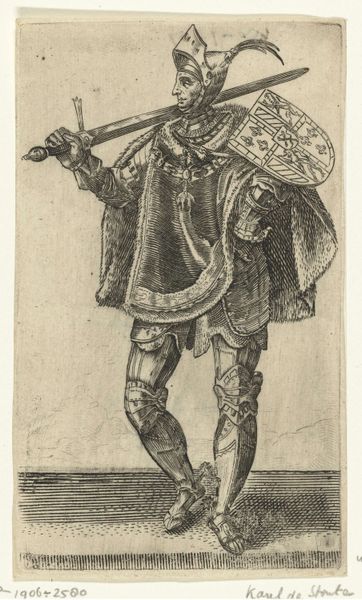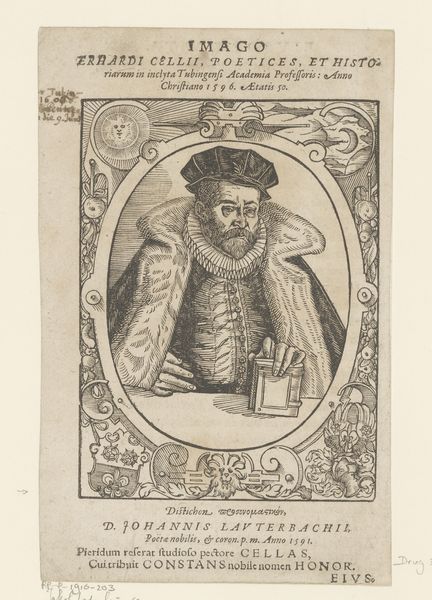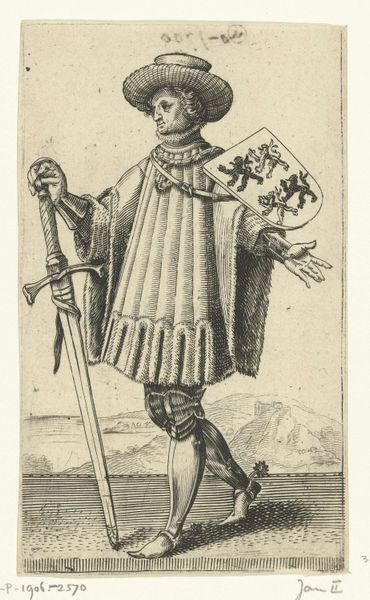
print, engraving
#
portrait
# print
#
figuration
#
11_renaissance
#
northern-renaissance
#
engraving
Dimensions: height 408 mm, width 277 mm
Copyright: Rijks Museum: Open Domain
Curator: Look at the sheer density of coded meanings in this portrait of Johan Frederik van Saksen. It's an engraving, dating from sometime between 1543 and 1546. The artist was Cornelis Anthonisz. Editor: My first thought is simply the overwhelming display of wealth. That fur stole alone screams privilege, and the ornate details of his clothing… It's a very deliberate statement, isn't it? Curator: Indeed. Each element is carefully chosen to reflect his status and power. The fur signifies authority, while his multiple chains symbolize rank and connection to various noble houses. Don’t overlook the prominent display of his coat of arms to the right; every quartering representing a claim. Editor: And consider the context. The Reformation was in full swing, and Johan Frederik was a staunch supporter of Luther. So this image is not just about personal vanity. It’s a statement of political and religious defiance. How might the iconography used challenge or subtly undermine established hierarchies of the era? Curator: A fascinating reading! In light of that, notice how deliberately traditional the composition remains. It invokes a familiar visual language, reinforcing his inherent right to rule. This work displays his temporal and presumed divine rights through symbols. Editor: Perhaps, but it is crucial to acknowledge how such power portraits contribute to the systemic exclusion of marginalized groups. These images are deeply implicated in reinforcing societal norms that we, today, might deem unjust. His clothing and accoutrements display that society was deeply stratified. Curator: An essential point! I am drawn back to the shield on the right side. Each quarter is rich in imagery that echoes familiar patterns and shared belief systems. They served not only to establish familial legacy but to shape public perception, acting as an emotional shorthand that continues through the years. Editor: Exactly, this kind of artwork reflects the artist and owner’s beliefs. Examining them challenges us to confront these issues head on, engaging actively to deconstruct such historical systems. How much did Cornelis intend such symbolism versus unconsciously reflecting his time? Curator: It offers us a great space for contemplating the layered meaning carried within portraiture. It makes one appreciate its ability to transcend its origin. Editor: A rich, and complex dialogue!
Comments
No comments
Be the first to comment and join the conversation on the ultimate creative platform.
